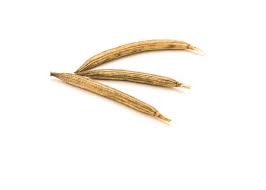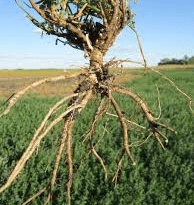The Pepper Inflorescence: Economic Importance, Uses, and By-Products
The pepper inflorescence refers to the flowering structure of the pepper plant, where multiple flowers are arranged in a specific pattern to facilitate pollination and fruit development.
Botanically, peppers belong to the genus Capsicum, and their inflorescence typically consists of solitary or clustered flowers that arise from the plant’s nodes. These flowers can be solitary (single flowers) or arranged in clusters (multiple flowers), depending on the pepper species and variety. The inflorescence plays a crucial role in the reproductive cycle of the pepper plant, where pollination leads to fruit set and development.
Culinarily, while the inflorescence itself is not consumed, its presence is crucial as it represents the beginning of the pepper fruit formation. Each flower within the inflorescence has the potential to develop into a pepper fruit, depending on successful pollination and favorable growing conditions. In some culinary traditions, such as in regions where edible flowers are used, pepper flowers themselves may be harvested and used in salads or as garnishes.
Horticulturally, understanding the pepper inflorescence is essential for growers to optimize pollination and fruit set. Pepper plants are typically self-pollinating, but cross-pollination can occur with the assistance of insects like bees. Growers may also employ manual pollination techniques to ensure a higher fruit yield and quality.
From a botanical perspective, the development and arrangement of the pepper inflorescence reflect the plant’s adaptation to its environment and evolutionary strategies for reproduction. The inflorescence structure varies among pepper varieties, contributing to the diversity of fruit shapes, sizes, and flavors observed in different cultivars.
The pepper inflorescence serves as the foundation for fruit development in pepper plants, encompassing the flowering structure and subsequent fruit set. While primarily significant in botanical and horticultural contexts, its role underscores the beginning of the pepper’s journey from flower to fruit, ultimately contributing to culinary diversity and agricultural practices worldwide.
The Economic Importance and Uses of Pepper Inflorescence

1. Spice Production: Pepper inflorescence is used to produce spices such as green pepper, white pepper, and black pepper, widely used in culinary dishes.
2. Culinary Ingredient: Fresh pepper inflorescence is used in cooking to add flavor and aroma to dishes.
3. Export Commodity: Pepper inflorescence is a significant export commodity, contributing to the economies of tropical countries.
4. Medicinal Uses: Pepper inflorescence extracts have medicinal properties and are used in traditional medicine for their health benefits.
5. Beverage Industry: Pepper inflorescence is used to flavor beverages, including alcoholic drinks like pepper wine.
6. Food Preservative: The antimicrobial properties of pepper inflorescence are used as natural preservatives in food products.
7. Essential Oils: Essential oils extracted from pepper inflorescence are used in aromatherapy, cosmetics, and perfumery.
8. Pest Control: Extracts from pepper inflorescence are used in organic pest control products.
9. Bioactive Compounds: Pepper inflorescence contains bioactive compounds such as antioxidants and vitamins beneficial for health.
10. Livestock Feed: By-products of pepper inflorescence processing can be used as additives in livestock feed.
11. Food Seasoning: Ground pepper inflorescence is used as a seasoning in various culinary preparations.
12. Culinary Preserves: Pepper inflorescence is used in pickling and preserves, adding a unique flavor.
13. Herbal Remedies: Pepper inflorescence is used in herbal remedies and dietary supplements.
14. Textile Dyes: Pigments extracted from pepper inflorescence are used as natural dyes for textiles.
15. Cosmetic Ingredients: Extracts from pepper inflorescence are used in skincare and haircare products for their beneficial properties.
16. Soil Amendment: Pepper inflorescence residues can be composted to enrich soil fertility.
17. Nutritional Supplements: Supplements derived from pepper inflorescence are used for their nutritional benefits.
18. Beverage Additive: Pepper inflorescence extracts are used as additives in beverages for flavor and health benefits.
Read Also: Recommended Volume of Water for Fish Farming on a Concrete Pond
The Products and By-products That Can Be Derived From Pepper Inflorescence

1. Black Pepper: Produced from dried and ground pepper inflorescence, commonly used as a spice.
2. White Pepper: Made by removing the outer layer of the pepper inflorescence and drying the seed.
3. Green Pepper: Harvested from immature pepper inflorescence, preserved in brine or vinegar.
4. Pepper Oil: Extracted through steam distillation, used in aromatherapy and skincare.
5. Pepper Extracts: Concentrated extracts used in supplements and pharmaceuticals.
6. Pepper Tincture: Alcoholic extracts used in herbal medicine and remedies.
7. Pepper Vinegar: Infused vinegar used as a condiment and preservative.
8. Pepper Paste: Blended pepper inflorescence used in marinades and sauces.
9. Pepper Seasoning: Ground pepper inflorescence mixed with other spices.
10. Pepper Capsules: Dietary supplements containing powdered pepper inflorescence.
11. Pepper Tea: Herbal teas made from dried pepper inflorescence.
12. Pepper Cosmetics: Skincare and haircare products containing extracts from pepper inflorescence.
13. Pepper Biopesticides: Organic pest control products made from pepper inflorescence extracts.
14. Pepper Food Coloring: Natural dyes extracted from pepper inflorescence used in food products.
15. Pepper Infused Oils: Oils infused with pepper inflorescence for culinary and cosmetic purposes.
16. Pepper Animal Feed Additive: Nutrient-rich additives derived from pepper inflorescence residues.
17. Pepper Natural Preservatives: Antimicrobial properties used to preserve food.
18. Pepper Herbal Remedies: Herbal remedies and supplements for health and wellness.
Read Also: Concrete Pond Management: Steps to take before introducing the Fish in the Water
Frequently Asked Questions (FAQ’s) About Pepper Inflorescence

1. What is pepper inflorescence?
Pepper inflorescence refers to the flowering part of the pepper plant where the fruits develop.
2. How is black pepper made from pepper inflorescence?
Black pepper is made by harvesting and drying the mature pepper inflorescence, then grinding it into the familiar spice.
3. What are the health benefits of pepper inflorescence?
Pepper inflorescence contains antioxidants and bioactive compounds that support digestion, immune health, and more.
4. Can pepper inflorescence be used in skincare?
Yes, extracts from pepper inflorescence are used in cosmetics and skincare products for their beneficial properties.
5. How can pepper inflorescence be used in cooking?
Pepper inflorescence can be used fresh, dried, or ground to flavor and enhance the taste of various dishes.
6. Are there any side effects of consuming pepper inflorescence?
While generally safe, excessive consumption of pepper inflorescence may cause digestive discomfort in some individuals.
7. What are some traditional uses of pepper inflorescence?
Pepper inflorescence has been traditionally used in herbal medicine for its digestive and anti-inflammatory properties.
8. How can pepper inflorescence be beneficial for agriculture?
Pepper inflorescence residues can be composted to improve soil fertility, benefiting agricultural productivity.
9. Can pepper inflorescence be used as a natural preservative?
Yes, the antimicrobial properties of pepper inflorescence are used as natural preservatives in food products.
10. What are some industrial applications of pepper inflorescence extracts?
Pepper inflorescence extracts are used in food processing, pharmaceuticals, cosmetics, and agriculture for various applications.
Read Also: Adaptive Means of Animals Coping with the Environment









